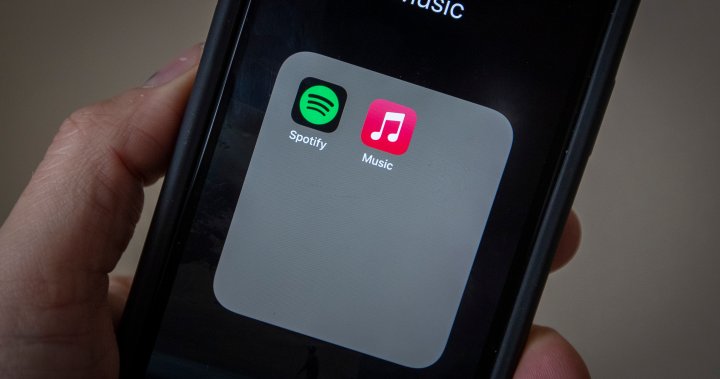In the days before the internet, music was a scarce and regulated commodity. Yet the current landscape tells a different tale. With so much music to go around, the dynamics of the industry have changed what was once a “macroculture” into a “microculture.”
To show you what I mean, let’s journey back to the music world of the past.
Record labels would only sign acts that they believed had a chance at being commercially successful or if they had a champion somewhere in the office and were deemed culturally significant. Releases were meted out in measured amounts, usually several thousand albums a year. These were then further filtered by radio stations, music magazines, and record stores. The public got to choose from what was left.
We had fewer choices to make. Even the biggest record stores stocked perhaps 100,000 titles, which included all eras and all genres of music. This made it easier to decide which acts to support in terms of music sales, time spent listening, and the purchasing of concert tickets.
Consensus ruled the day. Millions of people were on the same page when it came to determining which acts were “good” and deserving of our time and money. Those artists became huge and dominated the music world for as long as the public deemed them interesting and worthy.
The music charts were different, too. Because they were based on solely radio play and record sales, it was easy to follow an album’s progress. It might debut at, say, 187 on the Billboard Top 200 and begin a slow climb as more people got on board through radio play, touring, and old-fashioned marketing and promotion. Week after week, you could see the consensus build and watch a star being born. And you could see the exact week when an album ran out of steam and began to fall.
Much of this happened outside the general public’s view, too. Billboard was mostly an industry publication and wasn’t found on a lot of newsstands outside of major cities. If you were conscious of any chart action, it was through listening to weekly countdowns on the radio (Casey Kasem’s American Top 40, for example), charts published and distributed by local radio stations and record stores, or by studying the inside back page of Rolling Stone which featured abridged versions of a variety of charts.
Get the latest National news.
Sent to your email, every day.
In short, pre-internet, music was a macroculture with plenty of big stars. Today? Not so much.
Oh, we still have an array of music charts because this is how the industry keeps score. They’re also useful when it comes to marketing: “X’s new album debuted at #1!” and that kind of bumpf. But the truth is the charts don’t mean what they used to. Radio play and sales are still taken into account, but streams are weighted heavily. The combinations of data used in compiling charts are so convoluted and removed from the old days, that comparing today’s chart successes (“Drake broke another chart record once held by The Beatles! Look how many albums Taylor Swift has in the Top Ten!”) to the days of old are apples and oranges. More like apples and hockey pucks, actually.
The internet has flattened everything out. Instead of several thousand albums and maybe 20,000 songs a year, more than 100,000 new songs are being uploaded to streaming music platforms every day. Somewhere between 110 and 120 million tracks are sitting on Spotify’s servers right now. And that number is growing by millions every year.
The old cultural gatekeepers — labels, radio, record stores, music magazines, and I’ll even throw in music video channels — have been replaced by individual music fans. We’ve all become music directors, A&R staff, and curators. We listen to what we want, when we want, wherever we are, and on whatever device we want to use.
Wait for our favourite song to come on the radio? Go to the record store to buy a new album? Pick up a copy of our go-to music magazine at the drug store? Madness. Everything is available all the time — and for free or something approaching it.
There is too much music. Even though more than seven trillion songs were streamed last year — and that’s trillion with a “t” — the vast, vast majority were streamed less than 1,000 times. In fact, 45.6 million tracks had zero streams. Zero. Naught. Zilch.
With so much music to go around — there’s something out there for each and every individual —the music macroculture has disappeared. The musical tribes or yore have separated, fragmented, and stratified. Outside of a few superstars, music is all about filling niches, making consensus about who is “good” all but disappear.
Artists like Taylor Swift, Beyonce, The Weeknd, and Drake are undeniably popular. But because so much of music culture is about niches, they appear all that much bigger by comparison. No disrespect to any of those artists, but as big and powerful as they are today, they’re nowhere near as big as artists were in the pre-internet era when we had fewer choices.
Sure, we hear about Taylor Swift a lot, but that’s more celebrity talk and gossip than anything to do with her music. Swifties will bristle at that, but unless you’re part of her army, you probably can’t name five of her songs. And even if she is the Greatest Singer Ever, she’s an outlier in the world of entertainment. In the old days, she would have plenty of competition.
The rise of the music microculture is part of something larger, too. People willing to work at filling niches are coming online faster than the companies and institutions that have supported the macroculture for decades. If you don’t believe me, talk to your kids about what’s got their attention these days. They’re following TikTok influencers, YouTube stars, and indie acts on Bandcamp.
Content is being generated at the rate of at least 328.77 million terabytes per day. That’s 120 zettabytes per year. You don’t need to know what a zettabyte is to realize that it’s a big number. And just wait until AI really takes off.
The transition from macro to micro is only going to accelerate. As it does, what will it mean to be a “star” in the future when we able to get everything all at once?
© 2024 Global News, a division of Corus Entertainment Inc.










